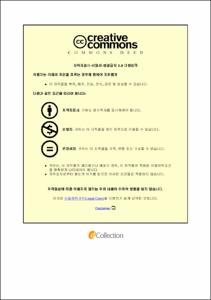Ulsan Univ. Repository
Thesis
General Graduate School
Ship Building & Marine Engineering
2. Theses (Ph.D)
Collision Response of Cylindrical Structures and Their Residual Strengths
- Abstract
- Fabricated ring- and stringer-stiffened cylinders or unstiffened tubular members have been used by marine structure engineers for a long time as major components of submarine pressure hulls, main legs of fixed or floating types of offshore platforms and floating offshore wind turbine foundations. During their service lifetime, these structures may be prone to get damaged caused by accidents such as ship collisions, groundings, or slamming. Among these accidents, ship collisions have been highlighted as the most serious ones owing to the damage or even catastrophic loss of the cylinder structural integrity. The present thesis deals with the structural behavior of offshore structural components subjected to accidental loads arising from the collision and their residual strength under combined axial compression and radial pressure.
Relevant experimental data of small-scale ring- and stringer-stiffened cylinder and H-shape tubular members are compiled. The aim of the tests was to provide more realistic experimental information to understand the extent damage of these structures under dynamic mass impact as well as hydrostatic pressure loadings. The details of the experimental setup, test procedure, exact material properties, and test results are reported in this study. The experimental data appear to be useful for future benchmarking of numerical and simplified prediction methods for similar structures. Numerical models are developed using the finite element software package ABAQUS, and comparative analysis of experiments is conducted. In the numerical analysis, the effects of boundary conditions and the strain-rate sensitivity of the material and other dynamic effects on these structures were considered carefully. The accuracies of numerical assessment of impact response and their residual strength are discussed.
Dynamic impact test on H-shape tubular member at room and low-temperatures are also conducted. The fracture response and failure mode of offshore tubular structures under low- velocity mass impact are discussed. Furthermore, a new simple critical failure strain formulation has been provided during considering the size of the fine mesh in the contact area between the offshore tubular member and ship collision. The accuracy and reliability of formulation have been validated with experimental results. Thus, the proposed equation can be used to a collision scenario similar to that of the current study.
Rigorous parametric studies of full-scale ring- and stringer-stiffened cylinder examples and H-shape tubular members are performed using the numerical method which has been validated with the experimental results obtained from the tests reported in this study and other test data available in the open literature. Based on the numerical results, simple design formulations were derived for predicting the extent of local denting damage and the residual strength of the damaged structures. The simple formulas can be used for quick estimation of residual strength under various loadings. The accuracy of the derived formulation has been quantified by comparing with test results and numerical predictions, showing a good agreement for all the loading cases. These formulations can be useful for the purposes of the design of these structures under the risk conditions of marine structures.
- Issued Date
- 2018
- Awarded Date
- 2019-02
- Type
- Dissertation
- Alternative Author(s)
- 도 꾸앙 탕
- Affiliation
- 울산대학교
- Department
- 일반대학원 조선공학전공
- Degree
- Doctor
- Publisher
- 울산대학교 일반대학원 조선공학전공
- Language
- eng
- Rights
- 울산대학교 논문은 저작권에 의해 보호받습니다.
- Appears in Collections:
- Ship Building & Marine Engineering > 2. Theses (Ph.D)
- 파일 목록
-
-
Download
 200000175965.pdf
기타 데이터 / 36.69 MB / Adobe PDF
200000175965.pdf
기타 데이터 / 36.69 MB / Adobe PDF
-
Items in Repository are protected by copyright, with all rights reserved, unless otherwise indicated.